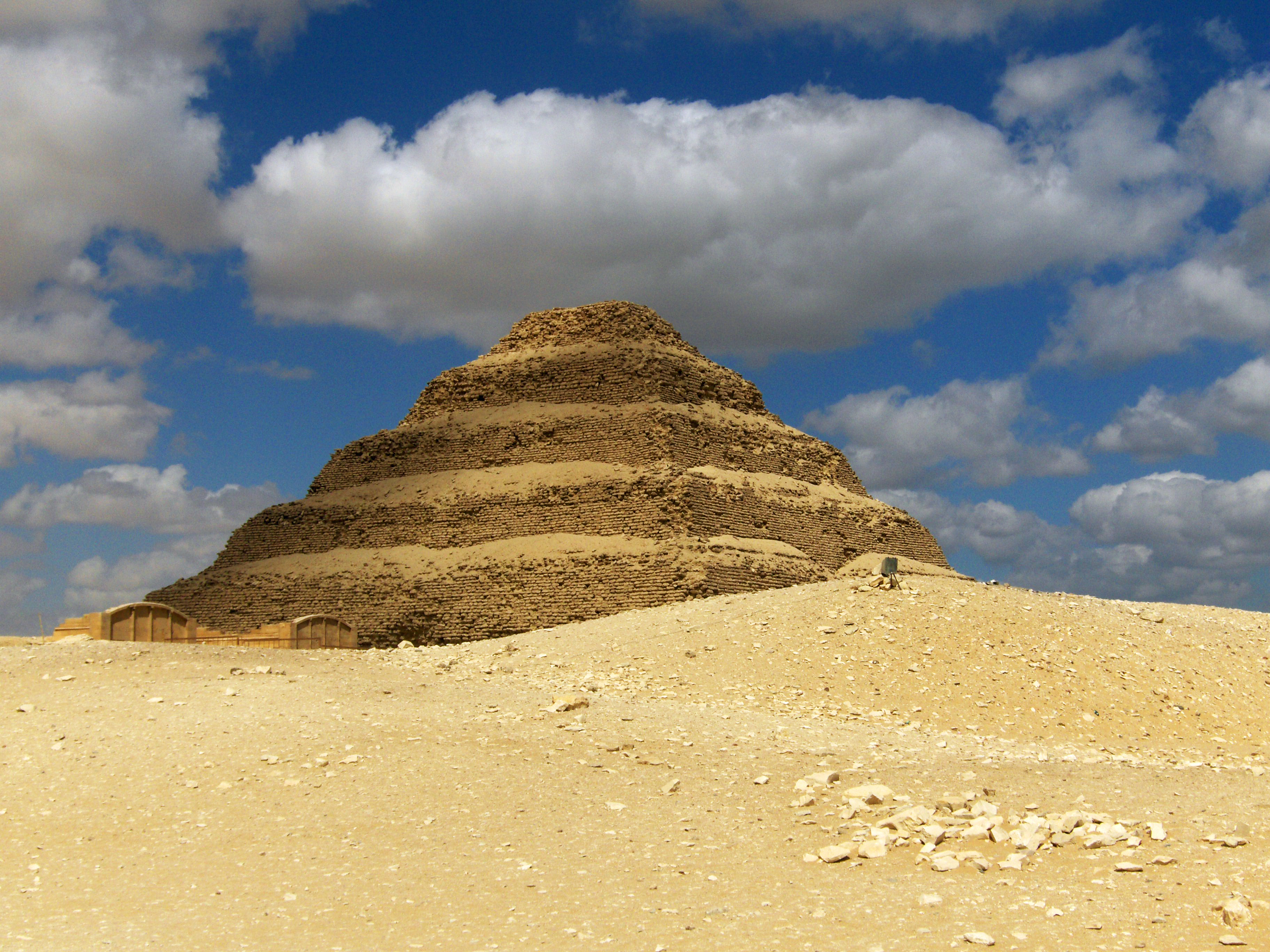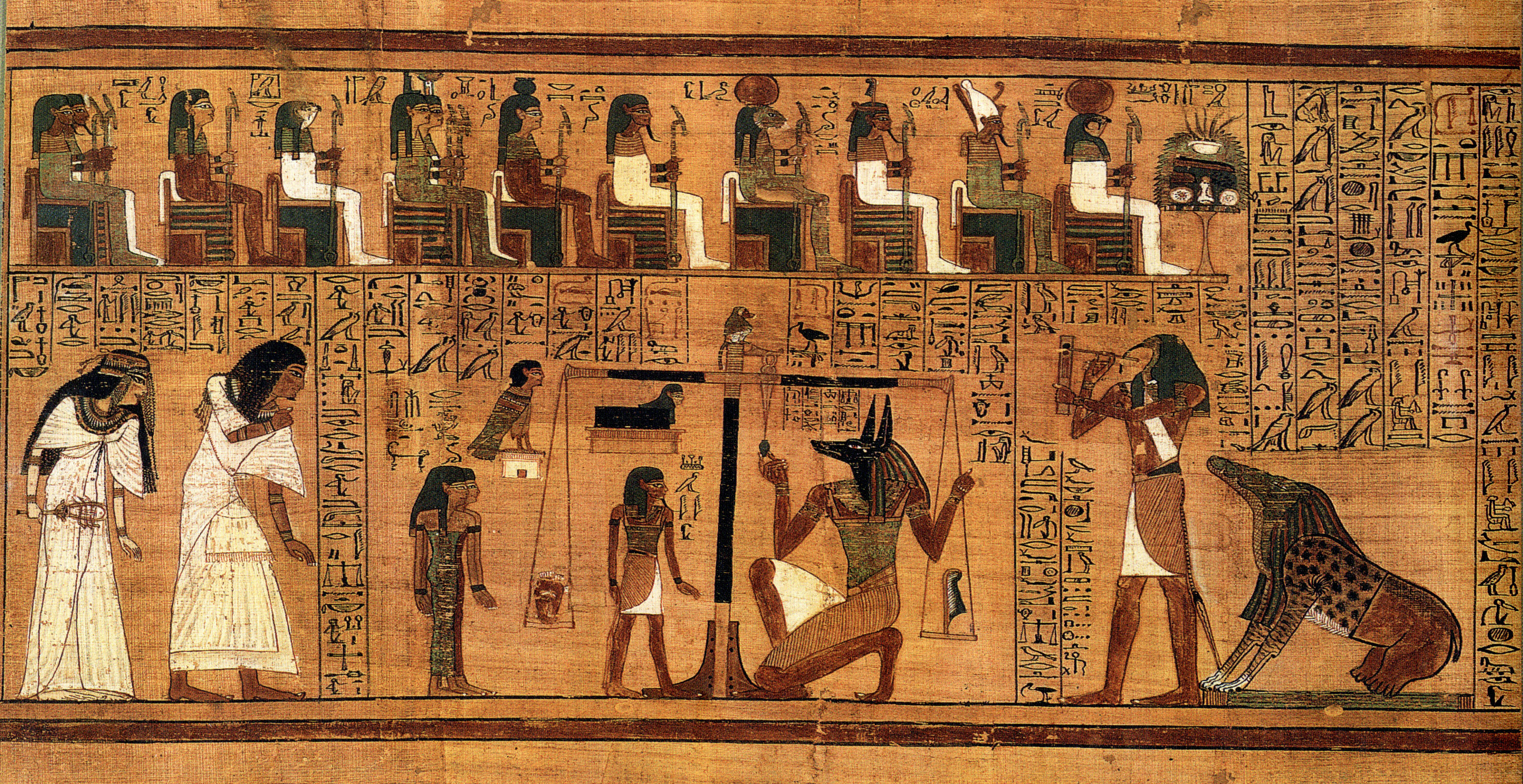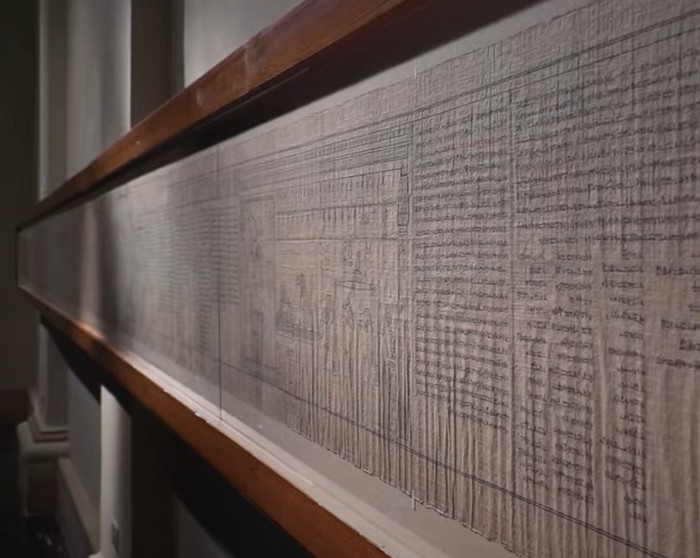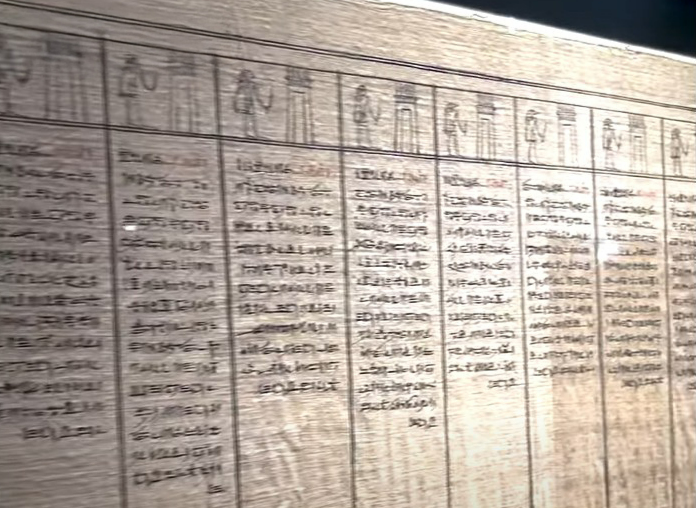In 2022, archaeologists digging at the Saqqara necropolis in Egypt found a nearly complete papyrus scroll over 50 feet long, now called the Waziri Papyrus. Uncovered in a sealed tomb near the Step Pyramid of Djoser, the scroll is believed to be over 2,000 years old. This dates it to the Ptolemaic (Greek) period of Egypt’s history.
A Rare Example Of A Complete Scroll
Fragments of funerary texts are often found, but full or near-complete scrolls are incredibly rare. The Waziri Papyrus is remarkable for its length and its outstanding condition. The scroll is intact enough to be legible and showcases hieratic script with vibrant illustrations, giving scholars a unique chance to study the Book of the Dead in its near-original form.
 Gary Ku from New Haven, CT, USA, Wikimedia Commons
Gary Ku from New Haven, CT, USA, Wikimedia Commons
A Closer Look At The Book Of The Dead
The Book of the Dead is a collection of funerary texts written to safely guide the deceased through the underworld and into the afterlife. It describes spells, prayers, and rituals meant to protect the soul and gain a favorable judgment before the gods. This new new, almost complete version brings illuminates the evolution of these texts through time and space.
Unique Variations In Spells And Scenes
The Waziri Papyrus has a number of traditional chapters from the Book of the Dead, including the “Weighing of the Heart” scene, but also features rare or alternate versions of spells not normally found in other scrolls. It points to the different regional beliefs, personal adaptations of funerary traditions, and the religious climate during the Ptolemaic period.
 Photographed by the British Museum; original artist unknown, Wikimedia Commons
Photographed by the British Museum; original artist unknown, Wikimedia Commons
Who Owned The Papyrus?
The papyrus belonged to a man named Ahmose, whose name and titles appear many times through the scroll. Ahmose was a common name, but researchers have linked this man to a priestly class that thrived during the Greco-Roman era in Egypt. His social position and burial within a prominent necropolis show that he had an important religious or administrative role.
How It Was Preserved
The papyrus was found in a stone coffin way down in a shaft tomb, wrapped up in linen and stored inside a wooden coffin with various other grave goods. The parched desert climate of the Saqqara plateau helped preserve the document. Even so, care was needed to stabilize the delicate fibers and inks so that the text could be properly read and understood.
 Egypt's second-longest ancient scroll unveiled in Cairo, The National News, YouTube
Egypt's second-longest ancient scroll unveiled in Cairo, The National News, YouTube
Digital Restoration And Translation
Since the discovery, Egyptian and international teams worked together to scan, photograph, and translate the papyrus. Advanced imaging technology enabled scholars to buff up faded portions of the script and piece together missing or damaged sections. This digital preservation effort safeguards broader access for researchers all over the world and for future generations.
Major Addition To Egyptology
The discovery of the Waziri Papyrus deepens academic understanding of Egyptian funerary customs. The inclusion of rare spell forms and unique iconography challenges earlier ideas about the uniformity of the Book of the Dead. It suggests a greater level of personal influence in these old religious texts than previously thought.
 Egypt's second-longest ancient scroll unveiled in Cairo, The National News, YouTube
Egypt's second-longest ancient scroll unveiled in Cairo, The National News, YouTube
Global Interest And Public Display
After its conservation and initial study, the papyrus was put on display at the Egyptian Museum in Cairo. The exhibit renewed the public’s interest in the Book of the Dead and Egypt’s spiritual heritage. The discovery will only whet the appetite of a public eager to learn more about ancient Egypt and the rich trove of secrets that still lie hidden under its swirling sands.
You May Also Like:
How Were The Great Pyramids Built? One Convincing Theory
The Ziggurat Of Ur: Triumph Of The Ancient Sumerians







